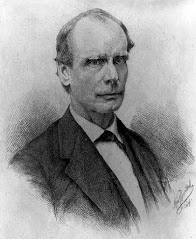Jed Handelsman Shugerman, Fordham Law School, has posted Professionals, Politicos, and Crony Attorneys General: A Historical Sketch of the U.S. Attorney General as a Case for Structural Independence, which appeared in the Fordham Law Review 87 (2019): 1965-1994:
We assume that the nineteenth century was an era of patronage, and the twentieth century marked the rise of professionalization. But the Office of the Attorney General reveals an opposite pattern — a troubling rise of cronyism in the DOJ from the early twentieth century.
Amos T. Akerman (LC)
This Article uses the rough categories of “professional,” “politico,” and “insider” or “crony,” based on each attorney general's background and how he or she rose to the office (rather than based upon their performance in the office.) Most AGs in the nineteenth century were "politicos" (major established political figures) or "professionals" (experienced lawyers relatively separate from partisan politics). The major turning point toward cronyism was during the Progressive Era: President Wilson’s Attorney General A. Mitchell Palmer and President Harding’s Attorney General Harry Daugherty, producing remarkable corruption and abuses in those DOJs. Then Democrats engaged in more cronyism in the mid-twentieth century, followed by more Republican cronyism since Nixon.
As a response to this history of corruption, this article proposes structural reforms for a more independent DOJ. It offers a historical critique of Justice Scalia’s dissent in Morrison v. Olson, and then offers some preliminary suggestions for structural reform of the Office of the Attorney General and other parts of the DOJ, borrowing from the independent agency model. The breakdown of the rule-of-law norms in the DOJ is not a new phenomenon; it is a century in the making. The solutions borrow from some models that have grown elsewhere in the executive branch over that same century.
--Dan Ernst
